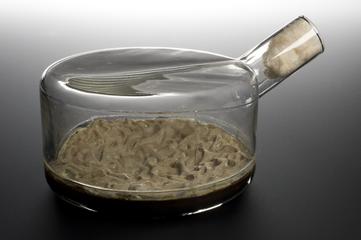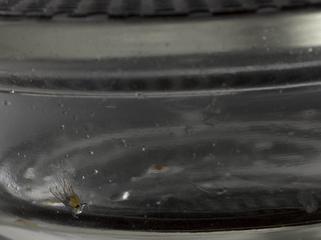
Experimental continuous feed stirred tank reactor, London, England, 1973
- maker:
- University College London




Experimental continuous feed stirred tank reactor, used in the conversion of benzylpenicillin to 6-aminopenicillanic acid using immobilised penicillin amidase. Devised at University College, London, c. 1973.
Enzymes are proteins that speed up chemical reactions in cells. Nearly all processes in the body require enzymes. They can be extracted and used on their own. This early reactor was designed in the 1960s by a group led by Professor Malcolm Lilly of the Biochemical Engineering department at University College London. It used the enzyme penicillinase bonded to cellulose to cut the side arm off the penicillin molecule. The enzyme was fixed (or ‘immobilised’) and a solution containing penicillin passed continuously in. The modified product flowed out the other end. Other groups were then bonded on to create new powerful drugs. The technology was widely used to produce familiar drugs such as amoxicillin.
Details
- Category:
- Biotechnology
- Object Number:
- 1984-493
- Measurements:
-
overall: 930 mm x 130 mm x 225 mm,
overall (inc. stand): 1010 x 405 x 290 mm
tank: 132 mm
- type:
- stirred tank reactor
- credit:
- University College, London. Department of Chemistry




